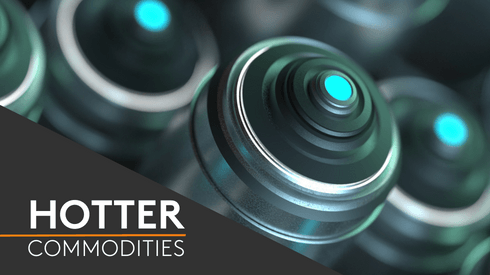Importing black mass into China has been illegal for many years, but sources said last year that Chinese authorities were considering whether to ease the restrictions, as Fastmarkets reported in June 2024.
The new national standard – formally named GB/T 45203-2024 Black mass for lithium ion battery recycling – was released on December 31, 2024, and will take effect from July 1, 2025, according to China’s national public service platform for standards information.
What are the standards?
Although the official document for GB/T 45203-2024 has not yet been released, a draft of the black mass national standard was seen by Fastmarkets on the China Non-ferrous Metal Standards and Quality website.
The new standard will categorize black mass into two types, according to the draft document, with type 1 being black mass produced from lithium-ion batteries containing nickel and cobalt, and type 2 being made from lithium iron phosphate (LFP) batteries.
Type 1 black mass will have three grades depending on its contents of nickel, cobalt and lithium, and impurities.
Grade 1 of black mass containing nickel and cobalt should contain more than 40% nickel and cobalt in total, and more than 5% lithium. Its impurity iron content should be less than 0.5%. Much of the material satisfying Grade 1 will be the high-purity material known in the market as black powder.
Grades 2 and 3 black mass should contain total nickel and cobalt contents higher than 25% and 10% respectively, and lithium contents higher than 3% and 2% respectively. The impurity iron content in both grades should be less than 1%.
The requirements on other impurities are the same for all three grades, with the limit on copper a maximum of 0.5% and aluminium of 1%.
For type 2 (LFP) black mass, there is only one grade for such material, requiring lithium content to be higher than 2%. The limitations on impurities such as copper and aluminium are the same as for type 1 black mass.
The national standard for black mass also dictates that moisture in all materials be less than 2%.
What it means for black mass imports to China
How these new standards might directly relate to importing black mass into China was still unclear at this stage due to a lack of official information from the government.
Some market participants believed that, once GB/T 45203-2024 takes effect, all types and grades of black mass will be allowed into the country as long as they meet the requirements of the standards, but others preferred to wait for further official announcements.
China has by far the largest lithium-ion battery recycling industry in the world, but it is running at low utilization rates and needs more input materials.
Industry sources told Fastmarkets that refiners in the country were running at an average utilization rate of less than 50% and that many were losing money.
“Black mass has been put under the label of ‘hazardous waste’ for some time in China, which makes it illegal to be imported. But it is actually a valuable resource for achieving a closed-loop economy, and for sustainability in the battery industry,” a recycler source in Hubei province said.
“There is an absence of standards and regulations in China’s battery recycling industry,” a trading source in Zhejiang province told Fastmarkets. “The new national standard can be seen as a first step to remedy this situation.”
A second Chinese trader source said that he interpreted the standards release as a “China black mass import regulation” and that details pertaining to imports should be confirmed by the end of the month.
But other market sources were not optimistic about future import volumes for black mass, due to the strict impurity limits in the standards, Fastmarkets heard.
“The limitations on impurities are extremely strict, according to the draft document,” a trading source in Southeast Asia told Fastmarkets. “It will be very hard for black mass from scrapped batteries to meet standards. They are more like black powder produced from cathode foil. But the supply of black powder is tighter than black mass in the global market.”
Payables for nickel cobalt manganese (NCM) of black powder have recently been heard at 82-85% CIF Southeast Asia for nickel and cobalt, including value of lithium.
Fastmarkets’ assessments of the black mass, NCM/NCA, payable indicator, nickel, cif Southeast Asia, % payable LME Nickel cash official price, and the black mass, NCM/NCA, payable indicator, cobalt, cif Southeast Asia, % payable Fastmarkets’ standard-grade cobalt price (low-end), were both 68-73% on January 8.
Black mass producers and traders have told Fastmarkets in recent months that they were hoping for Chinese imports to become legal because this would probably lead to a spike in demand and to higher payables for their materials.
Currently, the largest importers of black mass are in South Korea, Southeast Asia and India, but demand in all three of those locations has been muted over the past two months and, market sources said, was getting worse during the run-up to the Lunar New Year holiday to begin at the end of January.






